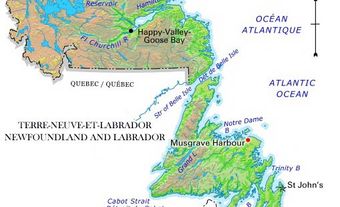Trinity, NL, incorporated as a town in 1997, population 137 (2011c), 191 (2006c). The Town of Trinity is located on TRINITY BAY in northeast Newfoundland. The first recorded English reference to the sizable, 3-armed harbour was in 1580 by Richard Whitbourne who, in 1615, held there the first court of admiralty in the New World. Though the nascent fishing outport was periodically raided by the French 1696-1713, Trinity grew as a major fortified fishing and trading centre.
In the 1720s local magistrates were appointed, and in 1730 a small church was erected, among the first such events in Newfoundland. In 1762 inhabitants yielded the town and fortifications to French Admiral de Ternay in exchange for a guarantee of safety. A strong, resident merchant class, mainly from Poole, Eng, a prosperous fishery, and extensive trade ensured Trinity's growth, and by the late 1700s it was one of the few settlements with benefit of clergy, magistrates and a surgeon.
In 1800 John Clinch, resident surgeon-clergyman, became the first in N America to inoculate against smallpox, using vaccine sent him by his boyhood friend, Edward Jenner. Clinch also compiled a BEOTHUK vocabulary, the only linguistic record of Newfoundland's now extinct indigenous people.
In 1833 the Roman Catholic Church of St John the Baptist was built; it remains one of the oldest standing buildings and the oldest Roman Catholic church in Newfoundland. The withdrawal of the great merchant firms after 1850 led to Trinity's decline as a major fishing centre. Because of its considerable past, the preservation of many of its historic buildings and records, and the restoration of some merchant premises, Trinity retains much of the look and flavour of a 19th-century town.

 Share on Facebook
Share on Facebook Share on X
Share on X Share by Email
Share by Email Share on Google Classroom
Share on Google Classroom


